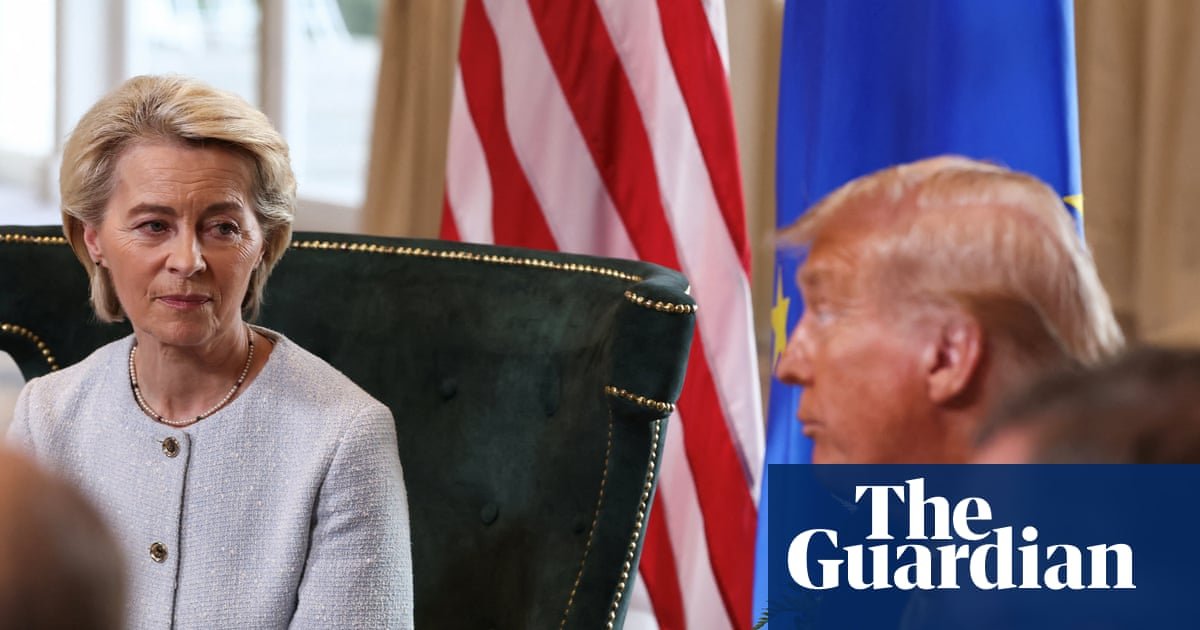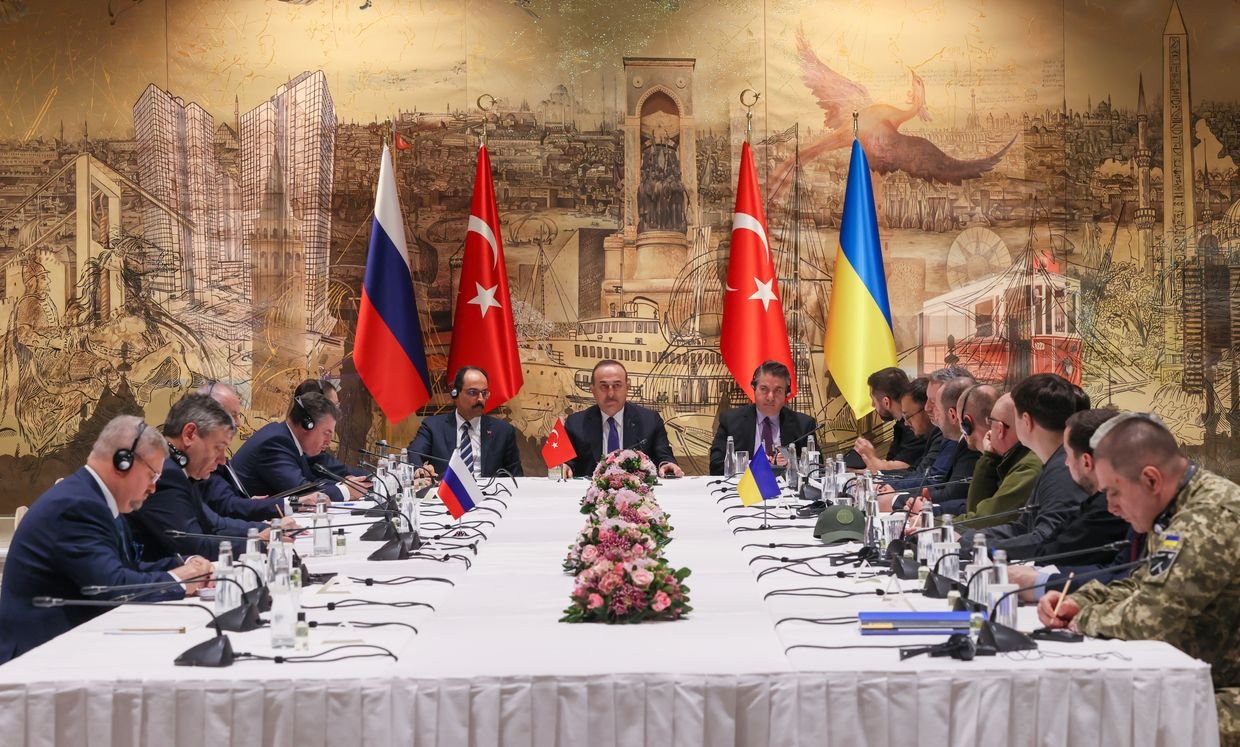Donald Trump and Ursula von der Leyen announced a deal on Sunday, but questions remain over what the finished picture will be
The EU and US have struck a deal that will see tariffs of 15% on most of the bloc’s exports to the US, averting a trade war between two of the world’s biggest economic powers.
France has consistently urged Brussels to be tougher, with ministers, taking to the airwaves on Monday complaining that Brussels has capitulated.
So what is in the deal, what is not and who are the winners and losers?
The centrepiece is a 15% baseline tariff on EU exports to the US, with the exception of steel which is still being taxed at 50%. Car imports, which are being taxed at 27.5% can be sold – from Friday – at a 15% rate.
The EU has also committed to buying $750bn (£560bn) in energy from the US over three years and has sweetened the look of the deal by aggregating all the known investment commitments and claiming they are going to invest $600bn (£450bn) into the US. This allowed Trump to declare the deal bigger than Japan’s which promised $550bn of investments.
In all, the tariffs will apply to 70% of EU exports worth €380bn a year.
In the other direction, US exports to the EU including cars, currently at 10%, will be duty free.
Donald Trump. Many financial institutions have remarked on what they believe is an “asymmetrical deal” that imposes tariffs of 15% on most EU exports including cars; involves the EU buying $750bn worth of energy and ends a decades old World Trade Organization agreement that pharmaceuticals are traded at zero percent tariff.
Sacré Bleu. The French trade minister, Laurent Saint-Martin, criticised the EU’s handling of the negotiations, saying the bloc should hit back in what he saw as a power struggle initiated by Trump. “Donald Trump only understands force,” he told France Inter radio. “It would have been better to respond by showing our capacity to retaliate earlier. And the deal could have probably looked different.”
The French prime minister, François Bayrou, said the deal represented a dark day for the EU.
The French have been talking tough throughout, but barring Hungary’s Viktor Orbán, they are on their own. The European Commission has bloc-wide competency to make policy and sign deals on trade so no one country can veto the US deal. France’s protests are seen as political and are not expected to derail the deal
The new US tariffs apply from Friday. The list of zero rated tariffs and further sectoral tariffs on steel, wines and spirits will require weeks and perhaps months of negotiation.
The next step, expected on Friday, is a joint statement, similar to that of the UK’s in early May, which must then be turned into legal text. This process could take two months, if the UK’s experience is anything to go by. The White House has already published its version of the deal.
At the same time Trump is expected to sign a series of executive orders putting the deal into legal effect in the US. It will not be binding in the EU which will have to create a legal instrument or international agreement to bring it into force. This could take weeks.
The alternative to Sunday’s deal was a trade war, the European trade commissioner ,Maroš Šefčovič, said on Monday, underlining just how close Trump came to walking out of the room.
He spoke about the “very intense” atmosphere in the ballroom at Trump’s Scottish golf resort and how European commission chief, Ursula Von der Leyen had kept Trump, who had already told reporters he was in a bad mood, in the room.
Insiders say he started out insisting he would go ahead with a planned 30% tariff on Friday, and then demanded 21% before finally settling on 15%.
“We did our utmost to keep our member states involved and informed every step of the way”, since Trump announced his “liberation day” tariffs on 2 April, said Šefčovič.
“If some still believe we can return to the pre 2 April situation and the agreement struck between the US and its trading partners over the number of weeks … it’s quite obvious that the world that was there before the 2 April has gone,” he added.
Pharmaceuticals will remain zero-rated this Friday until such a time that Trump does impose tariffs.
He has threatened them this week.
But under the Turnberry golf resort agreement he has committed to not imposing tariffs of more than 15% on pharma from the EU. This seemed to be confirmed by a text published by the White House on Monday night which said the 15% tariff would apply.
This is a win for the EU. If he breaks his word retaliation would be likely.
There will also be matching zero tariffs on a range of goods including aircraft and aircraft parts, some chemicals, some generics, semiconductor equipment, certain agricultural products, natural resources and critical raw materials.
The exact list is expected to be published before, or on, Friday.
Negotiations are ongoing with talks more advanced on spirits, according to EU officials. This will be welcome news for Irish distilleries and will mean extra lobbying from Europe’s greatest winemakers in France, Italy, Germany, Spain and Portugal.
Agriculture remains protected from US imports that do not comply with EU rules. But the EU has eliminated tariffs on some agrifoods it cannot source itself including some nuts, some processed fish and pet food. It is also increasing the quota on bison allowed into the EU at a favoured tariff.
The deal creates a division on the island of Ireland, as traders in Northern Ireland can sell into the US on a 10% tariff rate, courtesy of the UK deal, while their neighbours in Ireland will be hit with the 15% rate.
The disparity will make for difficult diplomatic conversations over guarantees to maintain stability on the entire island in the Good Friday agreement, which had already been rocked by the fallout from Brexit, when customs arrangements involving Northern Ireland became a huge headache for EU and UK negotiators.
EU-US tariffs: what is in the trade deal, what is not and who are the winners and losers? – The Guardian



